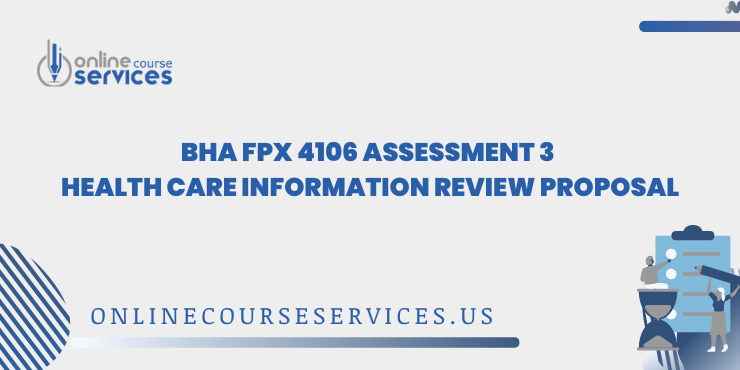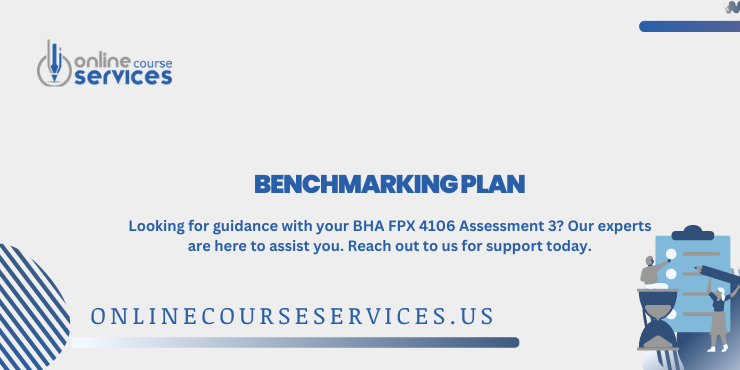
- BHA FPX 4106 Assessment 3
Health Care Information Review Proposal
In the U.S., the common types of cancer among adults are breast, prostate, lung, and colorectal cancer, as the risks are related to age and unhealthy habits. The effective use of EHRs for cancer is helpful in improving the quality of data and the efficiency of patient care coordination (Ma, 2022). It checks compliance with the laws and regulations that have been laid down and, on the same note, enhances the delivery of treatment. EHRs enable research and help to transfer fully developed patient information from one healthcare provider to another. This specific evaluation is aimed at identifying the goal of enacting and implementing a strategic plan for health information review in oncology. It will also cover issues related to data acquisition and protection, comparison, and enhancement of the quality of data.
-
Information Collection
The data to be collected includes the demographic details of the patients, such as their ethnic background and age. Moreover, medical history, treatment details, and plans, laboratory data, and various other records will be included in the portfolio to assess the quality of cancer care. Patient data, including ethnicity and age, are obtained because it is the best way to attend to any disparity affecting patients (Muhammad et al., 2021). Patient history provides information concerning the general well-being and tendencies of the patient regarding diseases. With the treatment plans, there is a way of tracking and modifying the implementation of treatment. At the same time, the laboratory work gives crucial information for the management of the disease in oncology (Muhammad et al., 2021).
Are you Looking for guidance for BHA FPX 4106 Assessment 3? Our experts are here to assist you. Reach out to us for support today.
The gathered data can be used to analyze the treatment outcomes and the general tendencies that take place. Working with standard codes as provided by SNOMED and LIONC makes it easier to compare with other better practices; improvement measures and quality enhancement activities that can be conducted within the facility are easily implemented (Muhammad et al., 2021). Also, by keeping up-to-date with the SNOMED and LIONC terminologies, the facility can systematically compare its practices to benchmarks and promote quality improvement plans within the healthcare facility. This approach to data collection inevitably improves patient care benefits and facilitates evidence-based decisions in the field of oncology.
Data Collection Plan
The identified intervention plan is CPOE and data mining, which requires analyzing patient data records from the last five years using EHR systems. The data to be gathered in the first phase includes the patient demographics along with their medical history, the treatment plan, and the laboratory results. Documents will be collected from different steps of the data information life cycle in the various phases of the EHR system, specifically in the creation, storage, and disposal of records. Patient information will be obtained about the patient’s personal characteristics, disease history, disease management regimen, and other critical clinical manifestations such as lab tests. Retrieval will cover the entire life cycle of information within the EHR system, which includes data collection in its comprehensive sense (Ma, 2022).
In phase two, the information from the Health Information Exchanges (HIEs) will become the details used to make the recommendations, hence improving coordination and analyzing trends. This will entail the use of data obtained from HIEs to supplement the collected data, improve care coordination, and offer additional understanding. They also allow for the enhancement of one field’s knowledge of the other and a deeper insight into patient care and healthcare system efficiency. Finally, in the last phase of implementing the developed model, it could be seen that standardized codes like SNOMED and LIONC will be integrated. This will ensure compatibility, provide the opportunity for practical detailed analysis of individualized care, disparities assessment, and support quality improvement interventions (Yaqoob et al., 2021). This step may take about one month to ensure the interventions’ implementation and proper disposal of abnormal PHI from the EHR.
-
Health Information Exchanges and Review Proposal
Health Information Exchange (HIE) is a method of sharing patient health-related information across various health facilities. The use of HIE data makes patient treatment efficient by creating detailed patient histories, aiding medical practitioners in decision-making, and working on the population’s health (Yaqoob et al., 2021). The lack of such ultimate terms as LIONC or SNOMED might mean that the data from HIE needs to bear uniformity and interconnectivity, which is a significant drawback to its applicability.
The personnel involves data analysts who should have adequate knowledge of EHR systems and data analysis, clinical reviewers with expertise in oncology, compliance officers who understand the regulatory rules, and project managers who are charged with the coordination of the project ((Mariotto et al., 2020). Training will be conducted in data extraction, various analysis methodologies, and relative understanding of rules and regulations, supported by job aids and daily help. Moreover, through progress meetings that will be conducted at specific intervals and feedback sessions, the implementation and completion of the review study will be enhanced.
Data Security Plan
The data security plan will involve ways of protecting PHI through legal requirements such as HIPAA and rules established by the CMS. HIPAA guidelines concerning staff confidentiality, privacy, and security will be embraced by personnel so that they will be trained accordingly. Measures that will be put in place include limiting the use of PHI, encryption of data, and security assessment (Muhammad et al., 2021). Measures on how to contain such incidences will be taken to avoid further exposure of patient information. Continual updates in the staff’s knowledge regarding HIPAA rules and policies and CMS requirements will help maintain compliance (Krzyzanowski & Manson, 2022).
BHA FPX 4106 Assessment 3 Health Care Information Review Proposal
The need for adherence to HIPAA and CMS requirements cannot be overemphasized in order to put the patient’s confidence in the information system, ward off legal consequences, and ensure the credibility of the healthcare information system. Besides, added security measures may be used, such as biometric scanners or multi-factor authentication. It is necessary to make frequent changes in the measures of security in order to counter the growing threats (Krzyzanowski & Manson, 2022).

Benchmarking Plan
The instruments to get data regarding the national level and the indicators of quality are HCUP and CMS. These offer consolidated data sources and measures for evaluating and comparing healthcare quality across the nation (Dupont et al., 2022). These benchmarks are used to assess the data collected from a specific facility so that the comparisons relate to the country’s predominant benchmarks. Data will be collected using standard code systems – SNOMED and LIONC, which fit national datasets (Dupont et al., 2022).
Data collected will also be analyzed with benchmarking and quality indicators by comparing different generated metrics with national normative values and reference data by CMS or any other national databases. Appropriate discrepancies will be vigorously recognized and acted upon in order to facilitate quality enhancement to approximate the standards of performance excellence as brought out through quality improvement activity (Yaqoob et al., 2021). Engagement with other Healthcare Information Exchange (HIE) networks will also complement the data harmonization and integration front, paving the way for real benchmarking and quality improvement exercises.
Quality and Change Management Strategies
Implications of the results obtained from the review are that quality improvement reviews can benefit from the data as areas for enhancement in the delivery of patient care are highlighted. It is possible to draw recommendations for evidence-based best practices that indicate the policies and procedures in compliance with HIPAA and CMS from these outcomes. Industry standards within departments, such as daily HIPAA training of staff, proper data security, and compliance with standards coding systems, SNOMED, and LIONC, are likely good practices (Kružliaková et al., 2021).
Moreover, the criteria of the organization on the data gathered, analyzed, and reported will be defined to review the information and correct the flow based on the regulation requirements. Engagement of legal and IT departments will also help strengthen the policies and procedures over time and maintain high standards in patient care services.
Implementation
The information review study plan entails three steps in conducting the study. First, fifteen to thirty-minute interviews would be performed with the patients, and a day and a half to three days would be spent getting access to HIEs. Secondly, the data collected will be checked against norms set by CMS, and this will take close to six to seven days. Thus, using this data to continue with the patient care will take three weeks. The following are some ways that physicians will use Protected Health Information (PHI) after applying protective measures by HIPAA regulations. In this process, essential guidelines such as the HIPAA guidelines related to the privacy and confidentiality of the patient will also be met to protect the data and privacy of the patient (Rizwan et al., 2022). This coordination with legal and IT shall help in setting higher standards of policy requirements and act as a strong foundation of compliance and improvement in the provided health care.
The actual carrying out of the information review study channels also entails a sensitization of the personnel to the rules of the HIPAA and measures on data protection. Further, to ensure the implementation of the abovementioned strategies, progress meetings and feedback sessions will be held on a regular basis to analyze the overall progress and the problems encountered (Rizwan et al., 2022). The involvement of the legal department, as well as the IT department, will improve the quality of policies for the organization and its compliance with laws.
BHA FPX 4106 Assessment 3 Conclusion
The proposal re-emphasizes the importance of HIPAA and CMS guidelines as benchmarks for reviewing health information, stressing data correctness, confidentiality, and compliance to enhance the patient’s care. Consultations with legal and IT departments help perpetuate further advancements in healthcare processes that enhance patients’ experience and outcomes. With this wide-ranging approach, the focus is placed on patients’ needs, and outcomes are improved for healthcare systems and patients themselves.
If you need complete information about class 4106, click below to view a related sample:
BHA FPX 4106 Assessment 1 Information Collection
BHA FPX 4106 Assessment 2 Benchmarks and Quality Measures
References
Dupont, S. C., Nemeth, J., & Turbow, S. (2022). Effects of health information exchanges in the adult inpatient setting: A systematic review. Journal of General Internal Medicine, 38(4), 1046–1053.
https://doi.org/10.1007/s11606-022-07872-z
Kružliaková, N., Porter, K., Ray, P. A., Hedrick, V., Brock, D. J., & Zoellner, J. (2021). Understanding and advancing organizational health literacy within a public health setting. HLRP: Health Literacy Research and Practice, 5(1), 35–48.
https://doi.org/10.3928/24748307-20210114-01
Krzyzanowski, B., & Manson, S. M. (2022). Twenty years of the HIPAA safe harbor provision: Unsolved challenges and ways forward (Preprint). Journal of Medical Internet Research Medical Informatics, 10(8).
Ma, Z. (2022). Cancer screening prevalence and associated factors among US adults. Preventing Chronic Disease, 19.
https://doi.org/10.5888/pcd19.220063
Mariotto, A. B., Enewold, L., Zhao, J., Zeruto, C. A., & Yabroff, K. R. (2020). Medical care costs associated with cancer survivorship in the United States. Cancer Epidemiology Biomarkers & Prevention, 29(7).
https://doi.org/10.1158/1055-9965.epi-19-1534
Muhammad, G., Alshehri, F., Karray, F., Saddik, A. E., Alsulaiman, M., & Falk, T. H. (2021). A comprehensive survey on multimodal medical signals fusion for smart healthcare systems. Information Fusion, 76, 355–375.
https://doi.org/10.1016/j.inffus.2021.06.007
Rizwan, M., Shabbir, A., Javed, A. R., Srivastava, G., Gadekallu, T. R., Shabir, M., & Hassan, M. A. (2022). Risk monitoring strategy for the confidentiality of healthcare information. Computers and Electrical Engineering, 100(100), 107833.
https://doi.org/10.1016/j.compeleceng.2022.107833
Yaqoob, I., Salah, K., Jayaraman, R., & Al-Hammadi, Y. (2021). Blockchain for healthcare data management: Opportunities, challenges, and future recommendations. Neural Computing and Applications, 34(2), 1–16.